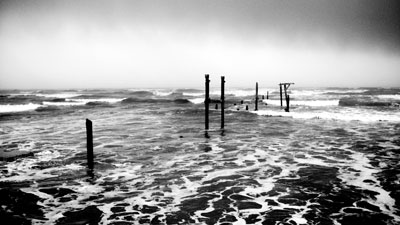All Nonfiction
- Bullying
- Books
- Academic
- Author Interviews
- Celebrity interviews
- College Articles
- College Essays
- Educator of the Year
- Heroes
- Interviews
- Memoir
- Personal Experience
- Sports
- Travel & Culture
All Opinions
- Bullying
- Current Events / Politics
- Discrimination
- Drugs / Alcohol / Smoking
- Entertainment / Celebrities
- Environment
- Love / Relationships
- Movies / Music / TV
- Pop Culture / Trends
- School / College
- Social Issues / Civics
- Spirituality / Religion
- Sports / Hobbies
All Hot Topics
- Bullying
- Community Service
- Environment
- Health
- Letters to the Editor
- Pride & Prejudice
- What Matters
- Back
Summer Guide
- Program Links
- Program Reviews
- Back
College Guide
- College Links
- College Reviews
- College Essays
- College Articles
- Back
The Truths Behind Captive Orcas
For the last 47 years, orcas have been held in captivity in confined and harmful living conditions all for the benefit of the man. There are many marine parks around the world with orcas in captivity. From San Diego all the way to Japan, these orcas perform in exciting performances with cool tricks and interactions with the audience. These performances are entertaining and amusing for the audience, especially the young ones. But would the people still be excited if they saw an orca being starved when they don’t complete a task? Or when these whales have scratches and wounds on their body due to overcrowded tanks?
Killer whales are living, breathing and extremely intelligent animals that shouldn’t live in a swimming pool for their entire life. If a mother doesn’t think it would be okay if her two children were kidnapped from their home and never to be seen again, what makes it okay to do this to whales?
The subject of orcas in captivity needs a great amount of awareness due to the fact that many people are constantly showing support of facilities such as SeaWorld and Six Flags Discovery Kingdom through the simple act of purchasing tickets and seeing these animals perform. Granted it is difficult to set multiple 10,000 pound orcas free, but as an act of respect and morality, we as humans can consider the future and make sure this never happens again.
Today, there are many people and organizations protesting against these marine parks and being the voice that the animals don’t have. Although, there are a great amount of people that are aware of the issues in these marine parks, there are also people that have no idea. This could be an outcome due to the trainers of these animals not being able to use their voice. Former SeaWorld trainer John Hargrove stated, “They [SeaWorld] are bullies who for decades have silenced trainers who threatened to speak out...” (Former Trainer Slams SeaWorld). For years the public did not have a clue about what was happening behind the scenes at SeaWorld due to the people actually interacting with them were threatened to stay quiet and couldn’t use their voice. The documentary Blackfish used testimonials from multiple former trainers which displayed credibility for the audience. However, the audience also learned how SeaWorld trainers are in fact performers rather than marine biologists.
A former trainer, Dean Gomersall, stated how he had no experience in training animals but after he tried out for the position of a trainer at SeaWorld, he was able to start interacting with the animals two months later (Blackfish). Many would think that to interact so closely with an 8,000 pound orca, one would have completed years of study and experience but often this is not the case. It is argued that the trainers create companionships with the orcas. However, people with such little experience should not be able to interact with the orcas so quickly since it puts both the trainers and orcas at risk.
In marine parks, the trainers spend lots of time with these orcas on a daily basis. But orcas also have a lot of alone time as well. In the wild, orcas travel up to 100 miles per day. Orcas held in captivity are not able to travel this far because they are confined in tanks that probably feel like kiddie pools to these 8,000-11,000 pound orcas. Hargrove argues that because these animals are being held in captivity for their whole lives and forced to do tricks simply to survive, the confinement and loneliness leads to psychological issues (Why Killer Whales Belong in the Ocean).
Orcas have been held in captivity for almost fifty years and that is fifty years too long. We as humans can be the voice for these captive orcas who are in pain. The first step is informing and bringing awareness to the people and we must use our voice.

Similar Articles
JOIN THE DISCUSSION
This article has 0 comments.

After watching the documentary Blackfish, I felt compelled to bring awareness to specifically captive orcas, but generally the awareness to animals held in captivity. I believe many people are in the dark on the truths behind facilities that use sea animals as performers and I hope people get inspired, influenced and compelled to make a difference.